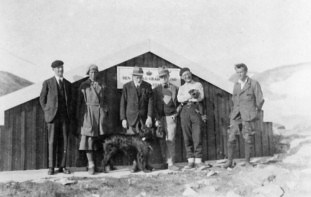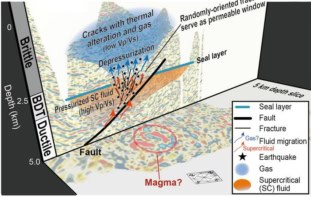Earthquakes may be heralded by bursts of neutrons from the Earth's surface and could even be linked to the lunar cycle, according to Russian physicists. Nikolaj Volodichev and Mikhail Panasjuk of the Skobeltsyn Research Institute of Nuclear Physics in Moscow noticed that flow of neutrons from the Earth's crust increased sharply during the new moon and the full moon. This is when tidal forces acting on the Earth are at their strongest, which could trigger seismic activity. The researchers are optimistic that their discovery could form the basis of a new system for forecasting earthquakes.
Volodichev and Panasjuk measured levels of neutron emission in the Pamir mountains in Tajikistan – a seismically active region where the Indian and Eurasian tectonic plates meet – and found that they peaked at twelve-hour intervals. The researchers noticed that the variation in neutron flux coincided with the daily fluctuations of the moon’s gravitational pull. This prompted them to study the neutron bursts when these tidal forces are at their greatest – that is, when the Sun, Earth and moon line up – at the time of a new moon or a full moon. Volodichev and Panasjuk found that the neutron flow during these periods was around twelve times higher than the background level. This led them to believe that the tidal stress on the Earth’s crust opens up fissures through which radioactive gases and particles can escape. The radioactive material quickly decays, emitting alpha particles that contain neutrons.
To back their theory, the researchers analysed data collected over 28 years from the Pacific ‘ring of fire’ – a region of intense earthquake activity. They found that the most severe earthquakes took place around the time of a new moon or a full moon. “Our work suggests that neutron flashes and an increase in seismic activity are closely related, and are bound by tidal forces”, said Volodichev. “The prediction of earthquakes from neutron bursts is still in the development stage but it is very promising”.



